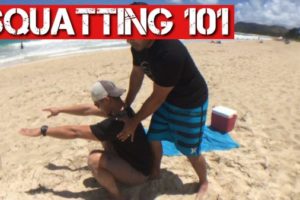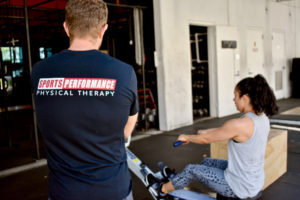You’ve picked up running, you are a recreational runner, or you are an experienced runner and you want to know how to improve your running efficiency. Running efficiency is based on a lot of factors, some that are internal and modifiable, some that are external and modifiable; and then there are factors that are not modifiable. These are my first three go-to tips for improving your running efficiency. I chose these three in the hopes that these are the simplest factors to modify but will give you the most bang for your buck.
Running is a series of steps, repeated thousands of times; think about every step, if you are using more energy than is necessary to produce the forces for that step, it will add up exponentially.
Let’s take a look at what running efficiency even means. Running efficiently, also known as running economy, is using the least amount of energy or resources to maintain a certain velocity. Why is this a desirable characteristic? Running is a series of steps, repeated thousands of times; think about every step, if you are using more energy than is necessary to produce the forces for that step, it will add up exponentially. This not only expends your caloric bank faster than necessary, but also, results in more wear and tear on your muscles, bones, and connective tissues. Since running is a sport of endurance, even a little extra wear and tear will wreak havoc on your body, with corresponding repetitive injuries, missed time from training, and possibly early exit out of the sport. Now, I’ve got your ear, you’re saying to yourself, I want to run more efficiently!
Below are my three tips to improve your running efficiency:
Tip 1
First, let’s look at initial contact of the lead foot. The first tip is to change where your foot is hitting the ground. It should either hit the ground slightly in front of your center of mass or directly below it, (essentially right below your belly button or slightly in front of it). This reduces the amount of braking forces that go through your leg and allow more proper forward propulsion of motion.
In the video below, the form is incorrect at 31 seconds and demonstrates a heel strike pattern. In the second portion of the video at 43 seconds, the form is correct and demonstrates a mid-foot strike pattern.
This strike pattern also means that your leg is already moving backward when it hits the ground which helps to improve forward propulsion. A video analysis, from a side view, can help demonstrate where your foot is in space in relation to your body when it hits the ground and whether it is moving backwards with that contact as well.
Tip 2
The second tip is to modify your cadence. Cadence is the rate at which you walk or run, in other words it is how many steps per minute you take. Recreational runners tend to fall in between 160-170 steps per minute, elite runners have approximately 180 steps per minute. Increasing your cadence closer to the optimal 180 per minute assists in a multitude of areas to improve your running economy. First, since your legs are moving faster there is less time spent in single leg stance; which will equal less force going into your leg (decreasing wear and tear on the muscles, joints and connective tissues) and minimizing braking and optimizing propulsion forces. Second, it will reduce your vertical oscillation. Say what?? Vertical oscillation is the amount of displacement your body travels up and down in space while you are walking or running. A certain amount is normal, but keeping this distance smaller makes you more efficient because you do not have to propulse yourself up and piston coming down, both of which will eat your energy up and create unnecessary motion. There are plenty of phone apps, smart watches, or modified songs (180 bpm) that can help you to improve your step rate to a more optimal cadence. Working intervals with faster rates, slower rates, and then at your desired rate will help build the muscle memory and cognition to recognize when your rate is where you would like it to be.
Increasing your cadence closer to the optimal 180 per minute assists in a multitude of areas to improve your running economy.
Tip 3
And the third and final tip is work on your total body strength! Running is a very repetitive activity, involving a lot of muscle and connective tissue breakdown. Adding a little strength training is a great way to not only help build back up those tissues but also help improve strength-endurance for the final push. You don’t need to spend hours in the gym but adding two days a week of thirty minutes of strength to your program will go a long way. The focus should be on total body strengthening, complete compound movements such as: squats, lunges, deadlifts (and different variations of these, especially single leg are very applicable to runners) and core exercises: plank and bridge variations.
The stronger your legs and core are, the more efficient they will be in absorbing impact forces and in creating propulsive forces with less wasted motion. Which will help improve your running efficiency!
As a summary, my three tips to help improve your running efficiency are: changing where your foot hits the ground to more underneath you, modifying your cadence to a more economical rate, and improving the strength of your legs and core. Try them out, let me know what you think!
Three tips to help improve your running efficiency are: changing where your foot hits the ground to more underneath you, modifying your cadence to a more economical rate, and improving the strength of your legs and core.
As always, I hope this helps! If you have any questions or would like to read about certain topics, send us an email at TeamSP@SportsPerformancePT.com.
-Dr. Nick Schroeder, PT, DPT, CSCS
For more tips on optimizing athletic performance FOLLOW US on:
- Instagram: http://www.instagram.com/SportsPerformancePT
- Facebook: http://www.facebook.com/SportsPerformancePT
- YouTube: http://www.youtube.com/c/SportsPerformancePT











